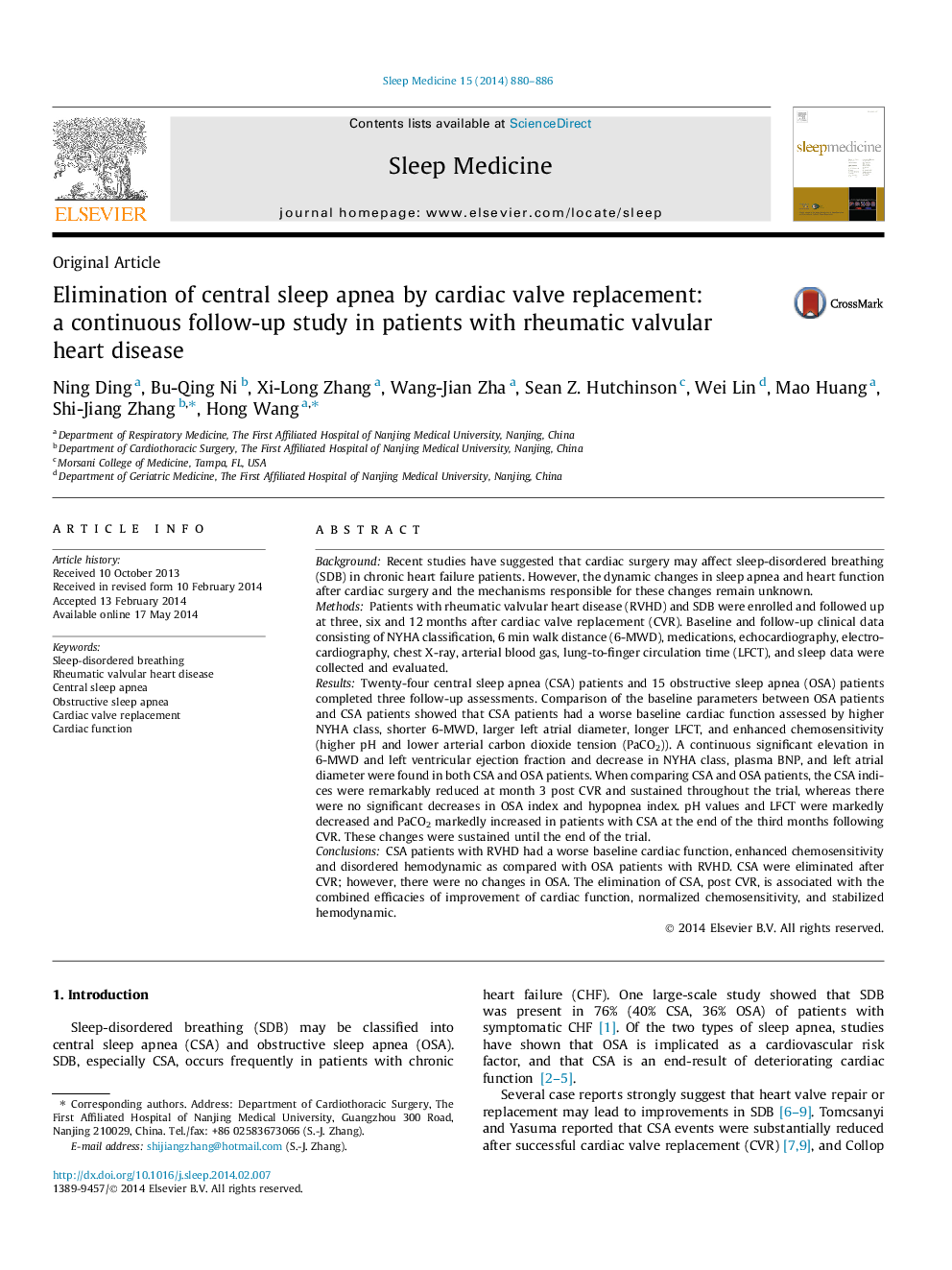| کد مقاله | کد نشریه | سال انتشار | مقاله انگلیسی | نسخه تمام متن |
|---|---|---|---|---|
| 3176085 | 1200245 | 2014 | 7 صفحه PDF | دانلود رایگان |
BackgroundRecent studies have suggested that cardiac surgery may affect sleep-disordered breathing (SDB) in chronic heart failure patients. However, the dynamic changes in sleep apnea and heart function after cardiac surgery and the mechanisms responsible for these changes remain unknown.MethodsPatients with rheumatic valvular heart disease (RVHD) and SDB were enrolled and followed up at three, six and 12 months after cardiac valve replacement (CVR). Baseline and follow-up clinical data consisting of NYHA classification, 6 min walk distance (6-MWD), medications, echocardiography, electrocardiography, chest X-ray, arterial blood gas, lung-to-finger circulation time (LFCT), and sleep data were collected and evaluated.ResultsTwenty-four central sleep apnea (CSA) patients and 15 obstructive sleep apnea (OSA) patients completed three follow-up assessments. Comparison of the baseline parameters between OSA patients and CSA patients showed that CSA patients had a worse baseline cardiac function assessed by higher NYHA class, shorter 6-MWD, larger left atrial diameter, longer LFCT, and enhanced chemosensitivity (higher pH and lower arterial carbon dioxide tension (PaCO2)). A continuous significant elevation in 6-MWD and left ventricular ejection fraction and decrease in NYHA class, plasma BNP, and left atrial diameter were found in both CSA and OSA patients. When comparing CSA and OSA patients, the CSA indices were remarkably reduced at month 3 post CVR and sustained throughout the trial, whereas there were no significant decreases in OSA index and hypopnea index. pH values and LFCT were markedly decreased and PaCO2 markedly increased in patients with CSA at the end of the third months following CVR. These changes were sustained until the end of the trial.ConclusionsCSA patients with RVHD had a worse baseline cardiac function, enhanced chemosensitivity and disordered hemodynamic as compared with OSA patients with RVHD. CSA were eliminated after CVR; however, there were no changes in OSA. The elimination of CSA, post CVR, is associated with the combined efficacies of improvement of cardiac function, normalized chemosensitivity, and stabilized hemodynamic.
Journal: Sleep Medicine - Volume 15, Issue 8, August 2014, Pages 880–886
